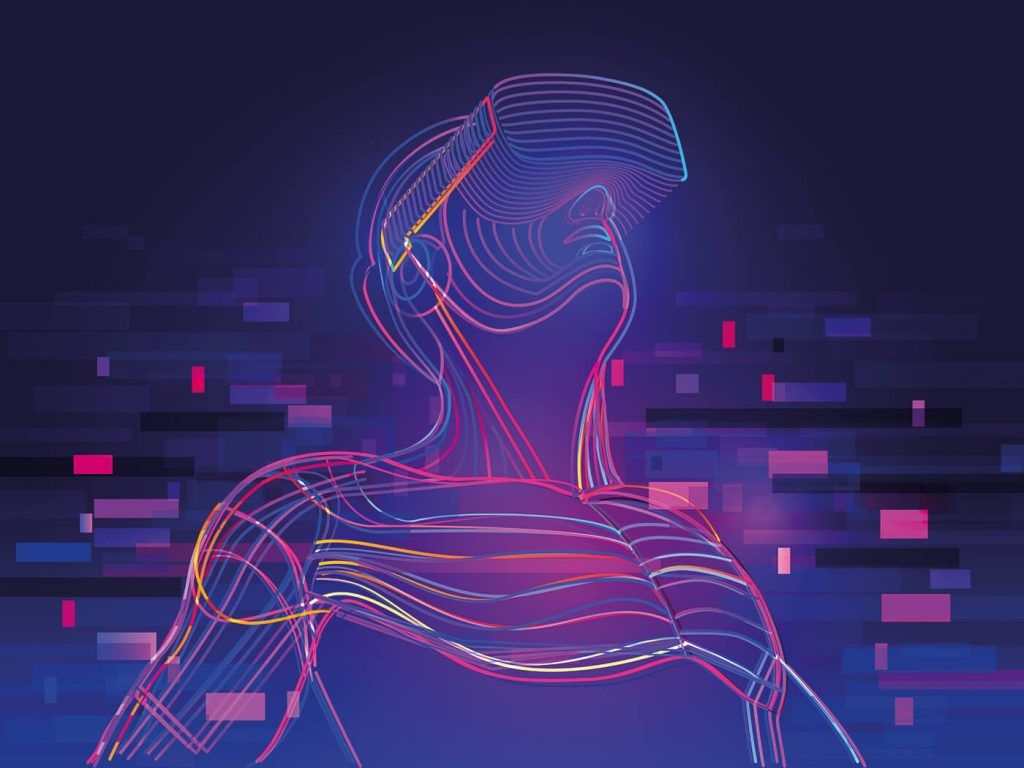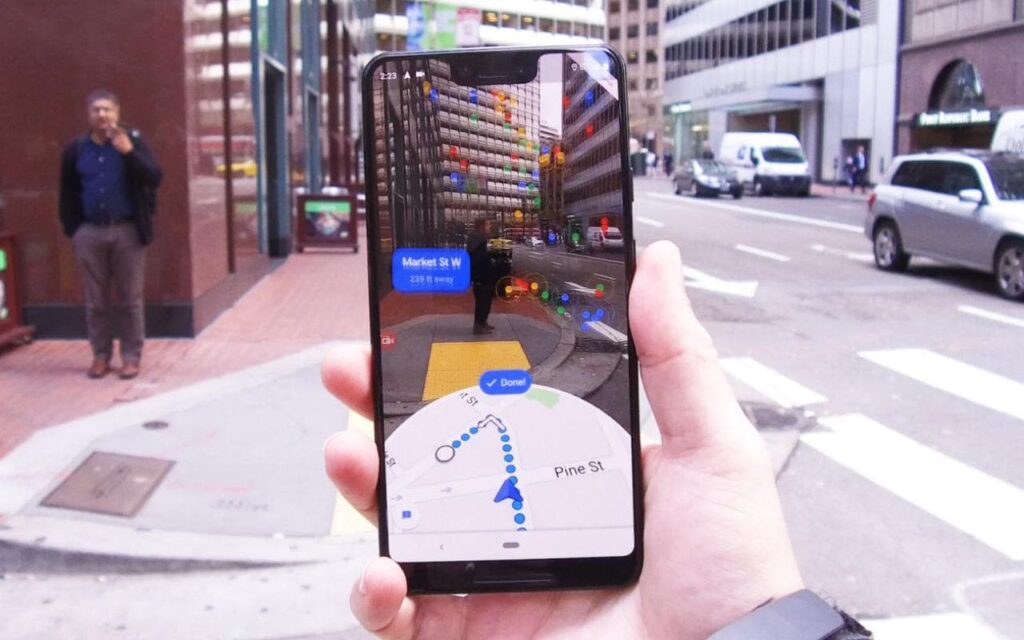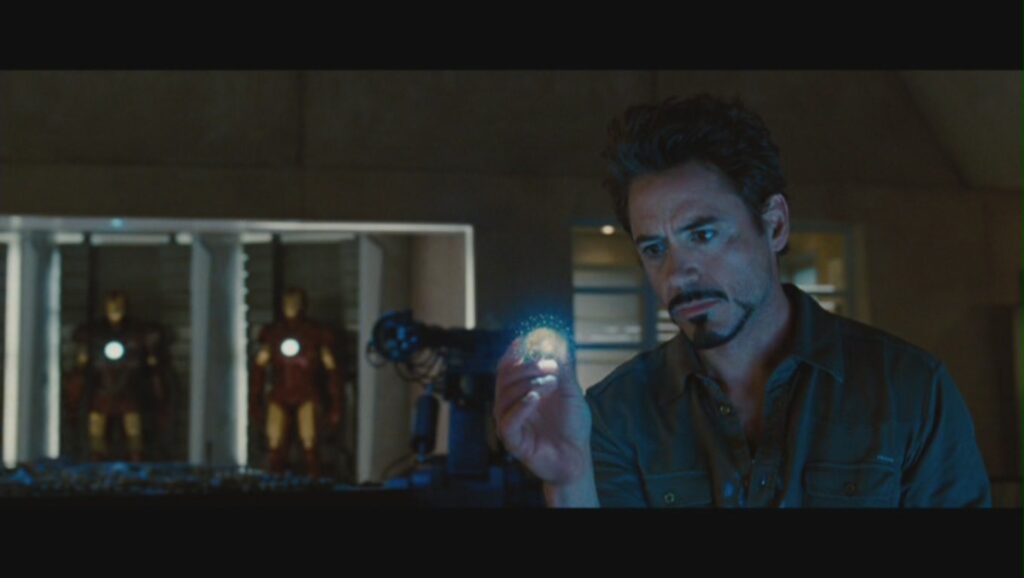
Introduction
Did you know that the world of augmented and virtual reality is being redefined by the power of patents? From transforming healthcare to bridging the gap in remote exploration, this cutting-edge technology is pushing the boundaries of what’s possible. With the AR/VR market expected to reach $300 billion by 2024, the race is on to secure the game-changing ideas shaping this exciting field. Join us in our latest blog, where we delve into the most impactful AR/VR patents and explore the limitless possibilities they offer.

AR and VR: Understanding the basics
The AR (Augmented Reality) and VR (Virtual Reality) are technologies that allow users to experience and interact with digital environments that either overlay or completely replace the real world. AR enhances the real world by adding digital elements to it. For example, mobile phone apps use the camera to display information or virtual objects on top of real-world scenes, such as Pokémon Go and Snapchat filters.
On the other hand, virtual reality (VR) is a technology that enables users to experience a virtual representation of the real world. However, VR can be expensive as it requires a proper headset and controller for users to experience it. The most famous and recent example that uses VR technology is the tech-giant Facebook’s metaverse.

Patenting AR/VR Innovations: Protecting the Innovations, Driving the Industry Forward
AR/VR technology has seen rapid growth in recent years, and with that growth comes the need to protect the innovative ideas driving it forward. AR/VR patents play a crucial role in safeguarding these ideas. Patent filings for AR/VR innovations encompass a wide range of areas, including hardware and software innovations, as well as new and improved methods of user interaction. Some of the key AR/VR patents filed in recent years include patents for headset designs, gesture control systems, and content creation tools.
In fact, with the introduction of 5G mobile networks and AI, the AR/VR domain has seen an increase in the quality of innovation and competition among big companies in the market. One example of AR/VR is the use of avatars instead of a user’s personal display picture. Recently, the telecom giant Bharti Airtel demonstrated the integration of 5G and AR technologies by displaying a glimpse of Kapil Dev’s unbeaten 175 in the 1983 World.

The rapid advancement of AR/VR patents around the world
In recent years, the rapid advancement of augmented reality (AR) and virtual reality (VR) technology has sparked a global race to secure patents in this emerging field. From the United States to China, companies and inventors are filing thousands of AR/VR-related patents every year, hoping to stake their claim in the fast-evolving world of immersive technology. As the number of these patents continues to increase, the competition is becoming increasingly intense, with major tech companies vying for dominance in a market that is projected to be worth billions of dollars in the coming years. With the potential to revolutionize industries ranging from gaming and entertainment to education and healthcare, the race for AR/VR patents has never been more important – and the stakes have never been higher.
The global race for AR/VR patents is heating up as major tech companies like Facebook, Microsoft, Apple, and Samsung compete to dominate the immersive technology market. These companies are developing groundbreaking technologies such as AR glasses, VR shopping malls, haptic feedback gloves, AR mapping, and VR headsets to secure their position in a market that’s projected to be worth billions of dollars. Given the high stakes, the competition for AR/VR patents has never been more intense.

Tech-giants and their AR/VR game
Here are some of the tech giants and their best innovations in AR/VR:
#1 Apple
Apple is leading the race in AR/VR technology. One of the most interesting patents that Apple has filed is called HOLOGRAMS AND 3D DISPLAYS. This technology allows the projection of images or videos in mid-air without the use of screens or supports. Additionally, users can also touch the projection and can also work on that data. A fictional example of this technology is shown in the very famous movie ‘IRON MAN 2’ where Tony Stark uses this kind of technology to create his own element.
#2 Meta (formerly Facebook)
Meta has filed over 250 patents in AR/VR domain covering aspects such as rendering avatars and using VR to create virtual environments of the natural world using specified headsets. Oculus, a subsidiary of Facebook, has filed a patent for hand-tracking technology that can be used in VR environments. This technology utilizes cameras to track the movements of the user’s hands and translates them into actions in the VR environment, enabling a more natural and intuitive form of interaction with VR content.
#3 Microsoft
Microsoft has developed a new technology that aims to make VR safer and more comfortable for users. By overlaying real-world objects captured by cameras on the headset onto the virtual content in real-time, users can have a clearer view of their physical environment while using VR. This is particularly important for those who may be prone to accidents, such as children or those with mobility issues. In addition, this technology can reduce feelings of disorientation and motion sickness by providing users with a point of reference. Overall, this solution has the potential to make VR more accessible and enjoyable for a wider range of people, unlocking its full potential for various applications.

VR in Gaming
Virtual Reality (VR) technology has transformed the gaming industry, providing players with a level of immersion and interactivity that was once unimaginable in the following ways:
- Immersive Experience: VR technology creates a more realistic and engaging gaming experience. It allows players to interact with the game environment and objects in a more natural way.
- Increased Interactivity: New types of gaming controllers, such as VR gloves and hand-tracking devices are available. They offer more intuitive ways to interact with the game.
- Enhanced Visuals: VR technology displays high-quality, three-dimensional graphics, making the gaming environment more visually stunning.
- Multiplayer Gaming: VR enables players to share a virtual space with others, creating new opportunities for multiplayer gaming.
- Training and Simulation: VR is being used in a variety of training and simulation applications, allowing individuals to practice skills in a virtual environment before applying them in real life.
How can a patent lawyer help you successfully secure your AR/VR innovations?
A patent lawyer can help in the following when securing an AR/VR patent:
- Ensuring that your invention meets the requirements for a patent.
- Conduct a prior art search to determine the novelty of your invention.
- Preparing and filing a strong and comprehensive patent application.
- Representing you in front of the patent office during the examination.
- Advising on potential infringement issues and enforcement of your patent rights.

Bottom line
In the fast-paced field of AR/VR, obtaining a patent is a critical step to protecting your unique ideas. With the increasing popularity of AR and VR technology, the importance of securing a patent cannot be overstated. By obtaining a patent, you can reap the rewards of your hard work and creativity. Hence, you can establish a strong position in the market. We at Photon legal can help you secure your patent rights and take your innovation to the next level. Contact us today to learn how we can help you secure your patent rights.
Reference
- VR patents and AR patents: What’s new? | Crysberry
- Virtual Reality Patents | UpCounsel 2023
- Introduction To AR & VR Tech & Their Patent Potential – TTC (ttconsultants.com)
- What Facebook’s Patents Reveal About the Metaverse | Founders Legal | Bekiares Eliezer LLP.

